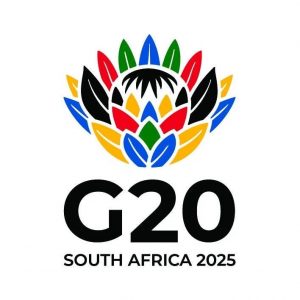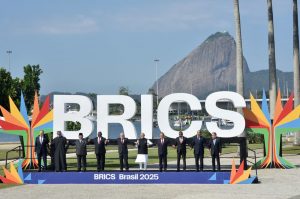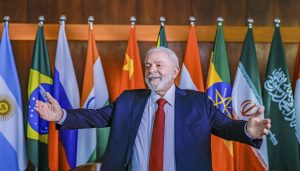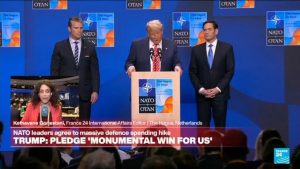
So we’ve been struggling to understand the current roles, and possible future roles of Middle Powers (MP). Context is important especially in the context of today’s global disorder that sees: ‘undying’ wars in the Ukraine and Gaza; seeming rising geopolitical tensions between the US and China, the US and Russia and rising Global South demands. How might MPs act in the near term with respect to these current tensions whether in Europe, the Middle East or in the Indo-Pacific? Can MPs still exert and advance global governance leadership notwithstanding the disorder trends? In the next couple of Posts I hope to elaborate on MPs and MPD. As you will see MPs and their potential influence have represented an important stream of research inquiry.
The CWD – now the Changing World Dialogue, has maintained a strong interest in the role of Middle Powers and their Middle Power Diplomacy. We held various virtual CWD sessions through the pandemic and we have continued our inquiries as the pandemic abated. By the launch of the CWD sessions in September 2024, Colin Bradford, the lead Co-Chair of the CWD saw the ‘MP World’ this way:
“Global pluralism, developed in 2020-2023, posits the existence already of “autonomous” strategies and independence in foreign policies as a “global political dynamic” in global relations. Pluralism is a core concept for CWD, in that it leads to the “pluralization” of relations with China as an “alternative framework” to address the toxic tension in the bilateral China-US relationship in recent years. This has been the goal of CWD from its foundation.”
“In the last year of CWD exchanges, the importance of Middle Powers and Middle Power Diplomacy has arisen as the domestic driver of pluralism. This new CWD series seeks to elucidate the factors enabling countries to be Middle Powers and the features of their international behaviors which are effective in addressing global systemic challenges.”
“A better understanding of these factors and features could facilitate proactive national efforts to deliberately contribute to global pluralism by “punching above their weight” and to influence global governance outcomes that include China and the US but which “globalize” those outcomes, rather than narrow them by allowing great power dominance to prevail.”
“See quotations at the end of this note, one by Shiro Armstrong and one by Mari Pangestu, both of whom are participants in this series on the importance of Middle Power Diplomacy for Australia and for ASEAN.”
“The purpose of this new CWD series of Zoom Sessions in the next four months is to focus on the two-sided coin of global pluralism and middle power diplomacy in order to explore the degree to which they are capable of achieving the goals of CWD for humanity.”
Colin then turned to the goals of the CWD, as he saw it, from his ‘perch’ as a Co-Chair and identified the following:
- “to preserve the world as a single international community;
- to avoid another Cold War;
- to strengthen global governance in the face of geopolitical tensions;
- to prioritize the “good-of-the-whole” within and between nations; and
- to mediate “difference” through dialogue by capitalizing on “diversity as an asset” rather than using it as a divide.”
And from there Colin sought to identify the dimensions of Middle Power Diplomacy (MPD) as he saw it:
“This segment of the note is a highly preliminary and more a conversation starter than the articulation of a framework for future work to be undertaken on MDP. Indeed, it is the purpose of this CWD series to iteratively develop that framework. We are just beginning.
The domestic side of global pluralism is the drive, or lack of it, within a nation to play a role in international affairs that advances the country’s interests and enhances its profile in the international community. It is certainly not always the case that countries that could have the power and influence to play an international role have chosen to do so. Neither is Middle Power status conferred upon countries once and for all but rather is a characteristic that waxes and wanes with the historical trajectory of the country.”
Having articulated these MPD dimensions, Colin then described, as he saw it, the key elements of being a MP:
“Some key elements that immediately come to mind as factors affecting the capacity of a country to play a role internationally as a Middle Power are:
- national leadership willing to embrace the ambition of being an MP;
- size, but not necessarily always the case;
- a pivotal issue and a moment in time when opportune to weigh in;
- a platform for playing out the role where germane issues are raised;
- an appreciation of the value of reputational capital that can accrue:
- supporting principles, norms and ideals regarded as high ground;
- regions matter as geographic spheres where MPD is played out; and
- regions matter as Middle Powers in their own right.”
Finally, Colin pointed to what he saw as the emergence of MPs and MPD in the current geopolitical setting:
“Geopolitics today dominate international relations and weaken global governance.”
“The choice is between *** a bipolar geopolitical order dominated by China-US relations, the war between NATO and Russia, and divisiveness between the G7 and the BRICS AND *** a pluralized inclusive global order in which Europe differentiates itself as a global actor and more than two dozen Middle Powers and regional players, like ASEAN and the African Union, have influential roles.”
“In the pluralized inclusive order scenario, European countries which alone are not great powers but who do exercise independent influence as Middle Powers, and even Major Powers, such as France, Germany, Italy, and the UK, are definitely global actors. Australia, Canada, Japan and South Korea are classic cases of Middle Powers in the literature. (8 MPs)”
“The rest of the G20 from the Global South fill out this scenario with Argentina, Brazil, Chile and Mexico from Latin America, India and Indonesia from Asia, and South Africa and Turkey create a diverse array of strong voices in global affairs. (+8 MPs)”
“Then there is an orbit of influentials consisting of Egypt, Iran, Nigeria, Pakistan, Qatar, and Saudi Arabia that certainly have region-wide roles in Africa and the Middle East, but given the global repercussions of events in these two areas, play roles in global relations more broadly. (+ 6 MPs = a total of 24 Middle Powers, counting ASEAN and the AU)”
As a result of his inquiry Colin sought to put “his hands” around what he sees as the MPs in today’s global order. Colin, in fact produced 24 MPs:
- “Europe: France, Germany, Italy, the UK
- Pacific Asia: Australia, Canada, Japan and South Korea
- Global South: Argentina, Brazil, Chile, Mexico, India, Indonesia, South Africa and Turkey
- Influentials: Egypt, Iran, Nigeria, Pakistan, Qatar, Saudi Arabia
- Regional Institutions: ASEAN, SAU (African Union)”
But the list was not complete and Colin adds the following from Central Asia mentioning: Belarus, Kazakhstan, Kyrgyzstan, Tajikistan and Uzbekistan suggesting:
“They are relatively small landlocked countries but are in a pivotal geographic situation between China, Russia, Europe and the Middle East. And they are largely out of the western view of the world, which I think is a mistake.”
“These five Central Asian countries are also five of the ten members of the Shanghai Cooperation Organization (SCO) in which China, India, Iran, Pakistan, and Russia are members; Egypt, Qatar, and Saudi Arabia (among others) are dialogue partners, and ASEAN, is a “guest attendee.”
“I would offer the thought for discussion that we give some attention to Central Asia as a region and to these five countries. Whereas I do not think we should focus on the SCO as a group, I do not think we should ignore it, which I must admit to having done for most of my career.”
“Pluralism exists today with leaders like India’s Modi, Brazil’s Lula, Turkey’s Erdogan, as well as Macron, Scholz, Meloni and EU leaders, taking independent positions, most notably in their relations with China. Instead of the China-US relationship dominating the global discourse, pluralism is manifested by assertive independence on the part of more than two dozen “middle powers” beyond the triad of great powers.”
As Colin concludes this examination, he ties the MP analysis to global summitry institutions in particular the G20 and the effort to maintain a single international community and blunt the negative impact of bipolarity:
“These two dozen entities have visible roles in a different drama. The G20 becomes a more significant platform that forces members of the G7 and the BRICS to talk, negotiate and even agree on concerted priorities and coordinated actions. The complexity of pluralism as a global political dynamic creates a mélange of perspectives and interests which is less ideological and a discourse which is more pragmatic, problem-centric, and professional. The G20 is the most prominent site where this new dynamic is played out, but not the only one.”
So that was where Colin saw the CWD focus on MP and MPD as we began our 2024 cycle of CWD zoom gatherings. It was a busy season of meetings including a series of MP gatherings including sessions on: Korea, Japan, Australia and New Zealand, Indonesia and Turkey.
In the follow on Post I want to reflect further on what we learned in our gatherings on MPs and MPD and focus in particular on the insights brought to us at the time, and then following on by Gareth Evans the former foreign minister of Australia. He had very valuable things to say.
Credit Image: MPSN (Middle Power Studies Network)
This Post first appeared as a Substack Post at Alan’s Newsletter https://globalsummitryproject.substack.com/p/can-we-foresee-middle-power-action

 So President Trump and his minions were extremely active this past week. The President, as Bully in Chief, and his people are still going strong, especially when it comes to trade and tariffs. But there were other areas that this President and his administration pushed forward on and warrant a look. So much (re)gressive action is being taken that it is hard to keep up with it all. It is exhausting.
So President Trump and his minions were extremely active this past week. The President, as Bully in Chief, and his people are still going strong, especially when it comes to trade and tariffs. But there were other areas that this President and his administration pushed forward on and warrant a look. So much (re)gressive action is being taken that it is hard to keep up with it all. It is exhausting. I’ll start by returning to a subject I broached in this earlier Substack Post,
I’ll start by returning to a subject I broached in this earlier Substack Post, 




